What We Learned at AV/IT Summit 2025
A new 'pain points' panel kicked off a day's worth of insightful conversations about AI, cybersecurity, and more.
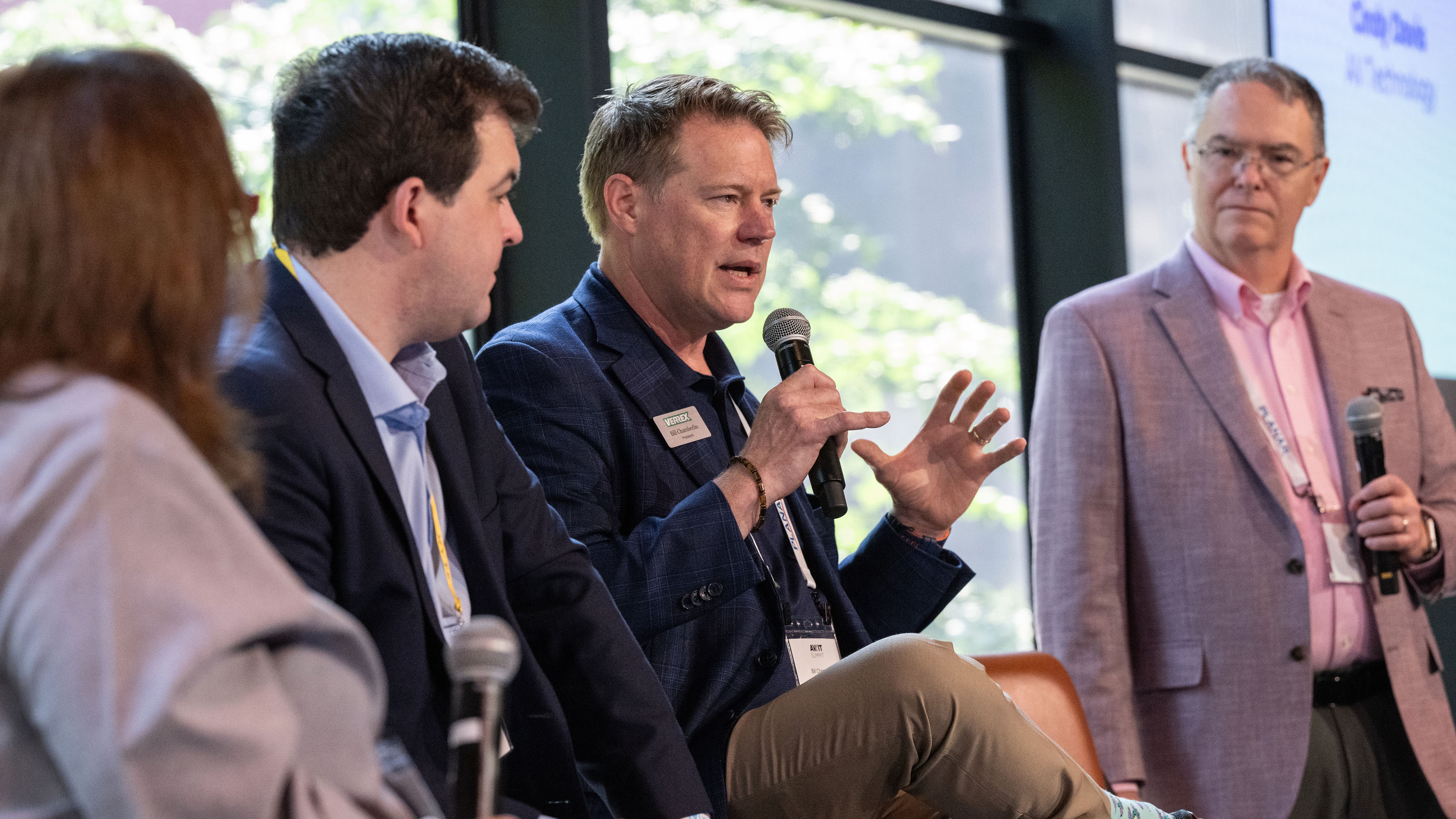
Setting aside the sports venues of previous years, the 2025 AV/IT Summit brought together industry leaders at Convene at One Liberty Plaza in Lower Manhattan for discussions centered on collaboration, innovation, and issues affecting the industry. Produced by Future B2B, it was the most successful summit to date, with more than 20 sponsors and record attendance.
[Subscribe to the FREE SCN Newsletter]
Led by AV Technology’s Cindy Davis and SCN’s Mark J. Pescatore, the conference program featured forward-looking sessions, networking opportunities, and actionable insights aimed at shaping AV/IT convergence. Here are some highlights from the day's program.
Bring the Pain
The summit kicked off with the new "Pain Points Panel," an interactive discussion about challenges currently facing the industry, including reducing system complexity and enhancing collaboration between AV and IT teams. Matt McCleskey of Xyte emphasized the importance of designing AV systems that are cloud-compatible and AI-ready, enabling them to adapt and stay relevant as technology evolves. He noted that standardizing a consistent set of components will make systems easier to service and training simpler.
Pescatore emphasized the ongoing frustration of not involving integrators early enough in the design process, which could prevent costly changes and better aligned technology choices with business goals. This resonated with the audience, with one participant noting that integrators are often faced with “nonsense” designs that they then must fix.
The panel also emphasized the problem of AV being seen as separate from IT, often found in facilities but not included in the IT strategy. Bill Chamberlin from Verrex claimed that AV should be treated as an operational expense, like IT hardware, with planned upgrade cycles of three to seven years, helping systems from falling behind in security and features.
Cybersecurity Realities
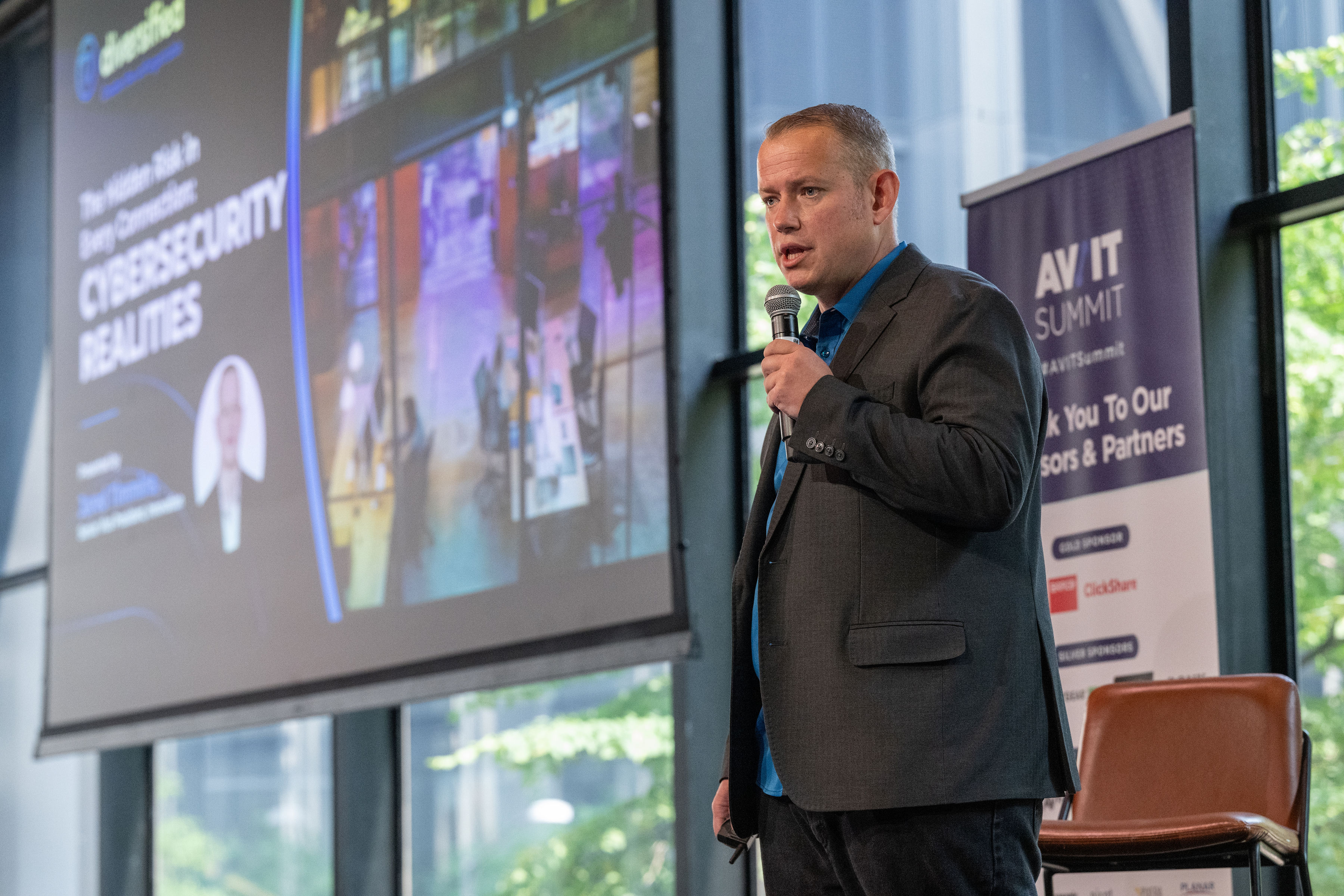
During his keynote, Jared Timmins of Diversified described the rapid integration of AV, IT, media, and cloud workflows as a technological renaissance that demands a new approach to security, design, and operations. Once isolated, modern AV systems are now intelligent, flexible, connected environments, but they are becoming more vulnerable to sophisticated cyberattacks, including a 4,000% increase in AI-driven phishing attacks over the past year.
A daily selection of the top stories for AV integrators, resellers and consultants. Sign up below.
[Diversified: Is Cybersecurity an Inside Job?]
Timmins stressed to attendees that they must go beyond “fit-for-purpose” AV systems and adopt "secure-by-design" principles, making security an integral part of the design and deployment process rather than an afterthought. “If you wait, security becomes a liability instead of a strategy,” he said.
While software orchestration, microservices, and cloud-based infrastructure offer scalability and agility, they also add complexity and potential vulnerabilities. Technology is crucial, but the connection between AV and IT teams is equally vital, as many security breaches stem from social engineering rather than technical flaws. Teams need not only better tools but also enhanced training, shared standards, and earlier involvement from integrators, manufacturers, and enterprise IT.
Virtual Misconceptions
Virtual production is a rapidly expanding field that offers numerous opportunities and practical uses across various sectors, including corporate and higher education. However, it is often misunderstood.
Sony's John Garmendi shared the “three Cs” of virtual production misconceptions: cost, complexity, and cinema. Many believe virtual production is only for Hollywood blockbusters, but there are many ways to get started small, such as greenscreens, AI-enabled tracking, or LED walls that can be scaled to fit your space and budget.
Matt Morgan of Ross Video emphasized that the key is asking the right outcome-oriented questions, such as what’s the purpose and how do we serve that purpose with the appropriate solution. Mark Metzger from AVIXA agreed, explaining that you can start small and scale as your needs grow, while still increasing engagement and production value.
Look to the Future
"The Future of AV Technology" session covered a variety of topics. Sharath Abraham from Jabra began by explaining how hybrid work has become the new norm, citing economist Nick Bloom’s research concerning return-to-office policies, with many companies often requiring at least one day in the office each week. Advanced Systems Group's Michele Ferreira added that hybrid work has expanded beyond conference rooms into broadcast environments, maintaining workflows that were adapted during the pandemic.
Looking closely at modern conference rooms, users expect them to function as a seamless extension of other workday tools, including integration with apps and a consistent user interface. Rob Pickering from TRITECH Communications emphasized that the most successful organizations make training a routine part of their culture through ongoing messaging and drop-in sessions, rather than one-time training events.
The panel agreed that when it comes to AI, it’s important to understand it rather than fear it, focusing on using it to streamline operational tasks like filtering emails, automating research, and mastering prompting to maximize its benefits.
Lessons from Higher Education
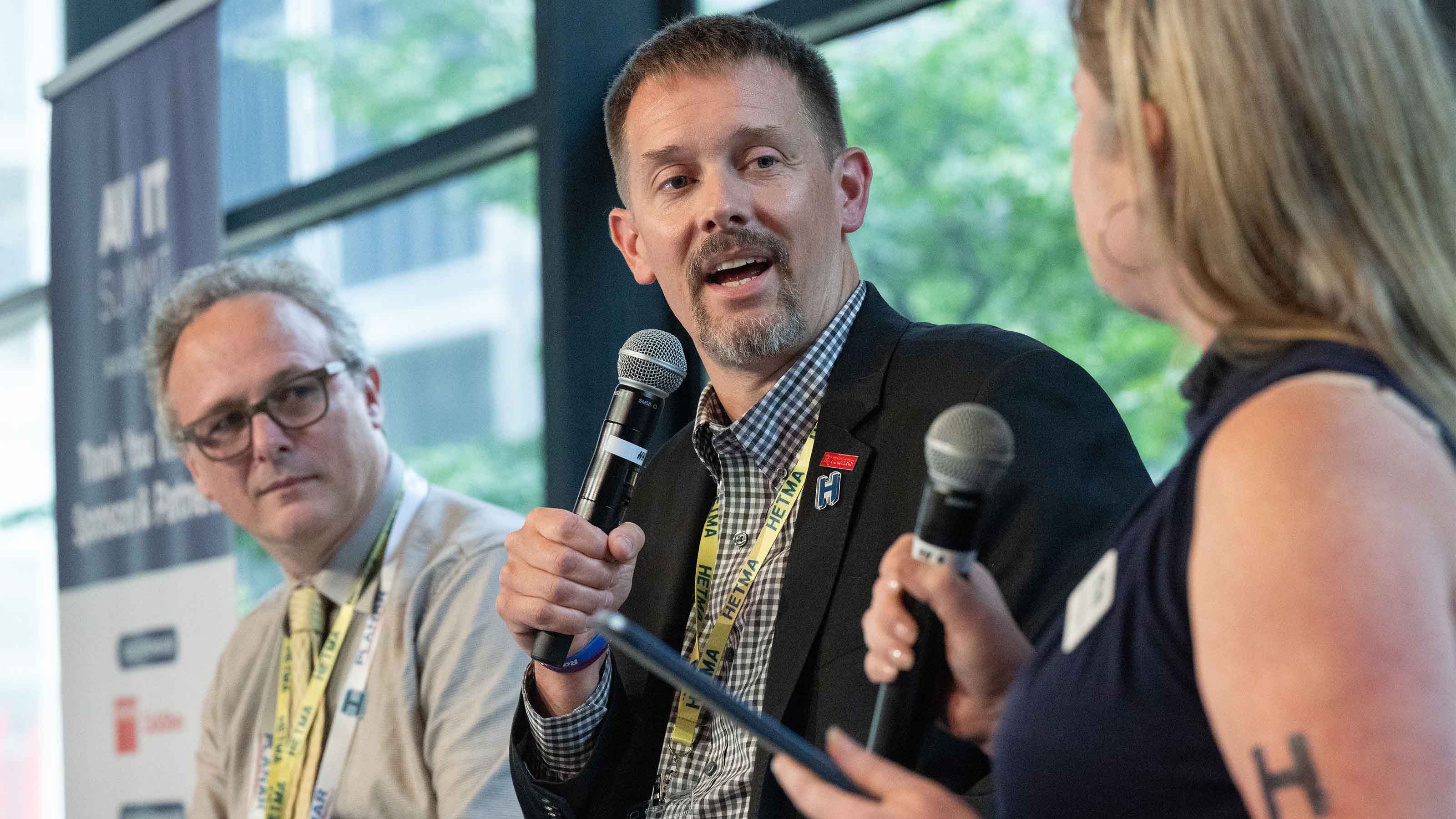
Moderated by HETMA chair Erin Maher-Moran from Johns Hopkins University, a session devoted to higher education wasn't focused on failures, but rather provided an opportunity to examine what’s worked, what hasn’t, and what we can all do better moving forward.
[SCN Goes Back to School—Get the August Issue Today!]
For example, Marcus Longmuir from The New School voiced frustration about a multi-room project that started smoothly but became overwhelmed by too many contractors, subcontractors, and project managers, which led to scattered communication and poor decision-making. “We ended up having seven final walkthroughs … and we still had, over the years, issues with all of the rooms,” he shared.
Tim Van Woeart from Rutgers University shared a cautionary story. Despite thorough preparation and testing, a crucial step was overlooked: network compatibility. This oversight caused AV switchers in 30 classrooms to lock up, requiring replacement and costing tens of thousands of dollars.
Even if everything goes perfectly, both panelists noted that well-installed systems can still be wasted if end users aren’t engaged or trained, which is why they emphasized ongoing support and faculty outreach. “If no one knows about it, or no one’s going to support it, it’ll then sit there in the system and just collect dust,” Van Woeart added.
AV/IT Convergence
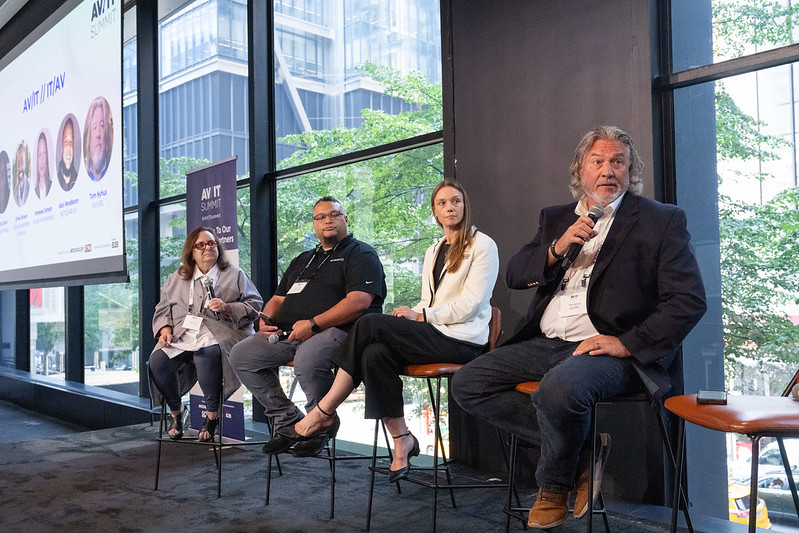
As discussed during the "AV/IT // IT/AV" session, the rapid adoption of AI has compelled many to find ways to bridge the gap between AV and IT, with early collaboration being crucial for successful AI-enhanced experiences. Vanessa Jensen from Shure also pointed out that cloud monitoring and enterprise VLAN integration are becoming standard practices, with remote visibility, monitoring, and troubleshooting becoming game changers for many organizations.
With an IT background, Tom Nyhus of AVI-SPL highlighted the complexity of network strategy and emphasized that you can’t use a one-size-fits-all approach when comparing dedicated AV networks to their integration into enterprise infrastructure. By using proper segmentation, VLANs, and firewalls, you can build networks that support both while reducing costs and maintaining performance and security.
NETGEAR’s Alex Pendleton emphasized the importance of reliable enterprise-grade hardware, demonstrated by NETGEAR’s success in penetration testing with Fortune 500 companies. He also noted that low-end switches often lack the features necessary for AV security.
Giving Voice to the AI Buzz
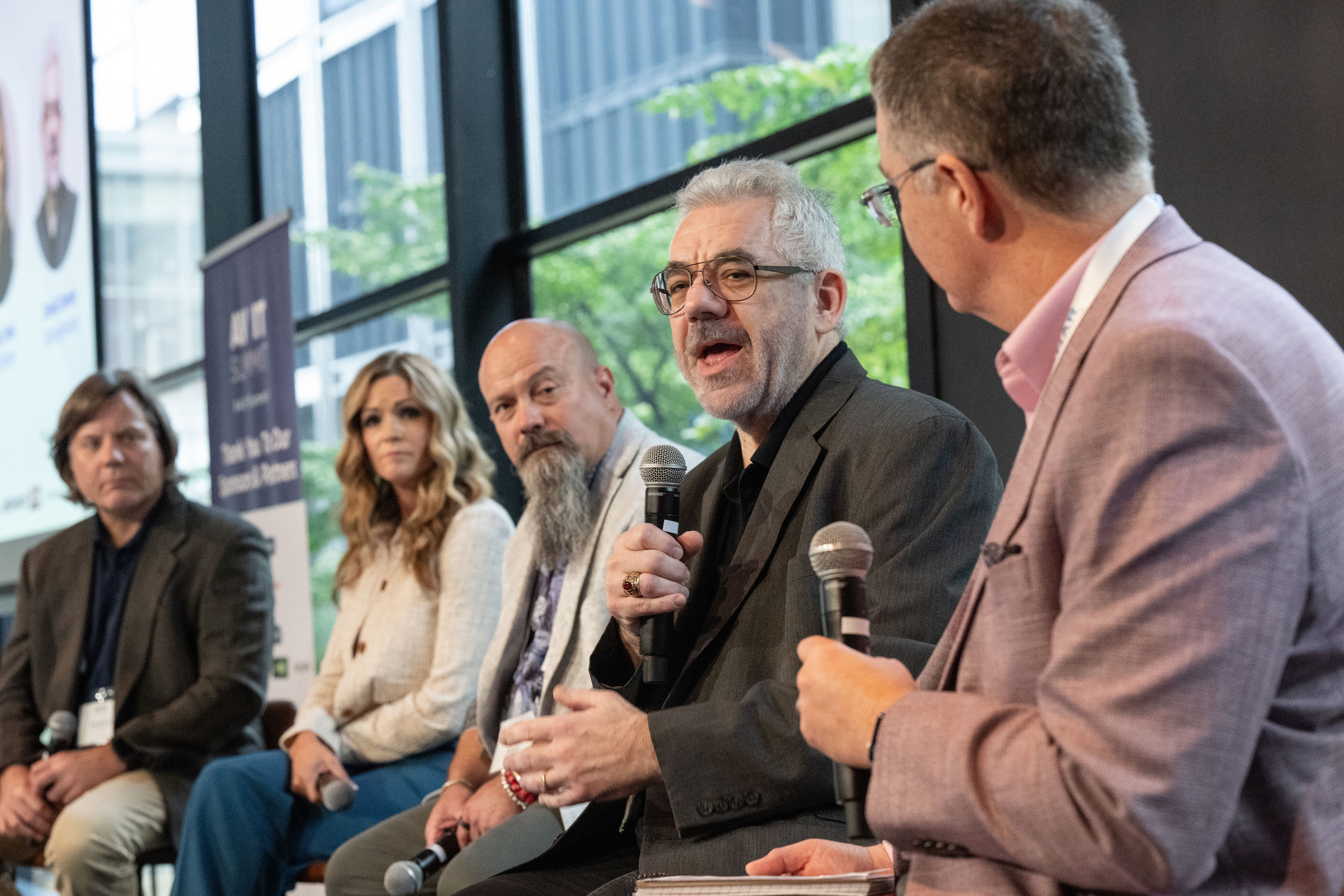
The summit wrapped up with a discussion of everyone’s favorite buzzword, AI, and how it’s transforming collaboration, workflows, and revenue models. Joel Carroll of Mersive highlighted how powerful AI can be in easing friction in meetings—and if you don’t even notice it’s there, that’s when we will know AI is truly effective. Meanwhile, Misty Chalk of BrightSign emphasized the impact on digital signage, highlighting that AI enhances real-time analytics and personalization by processing gaze detection, demographics, and emotions directly on the media player, allowing for instant content adjustments.
AI can also influence speech-to-text and translation services by enabling instant live translations in multiple languages. Bill Bennett from ENCO Systems mentioned that it can even reproduce speech in synthetic voices modeled after the original speaker.
But AI isn’t perfect, with SCN columnist David Danto of TalkingPointz sharing that it is often "confidently wrong." As a result, it must always be viewed as a tool that requires human oversight and editing of the final product. That’s why, when asked if AI is currently more hype or hope, most of the panel leaned toward hype, but recognized real potential if the Pro AV industry can figure out the best ways to utilize it.
Jennifer is a freelance writer and marketing consultant based in the New York City area. Within the AV industry, Jennifer loves to explore how technology can alter the world around us, creating immersive experiences unlike any other. She has years of experience working with AV integrators, manufacturers, and event production companies in developing engaging content to increase their overall awareness.

